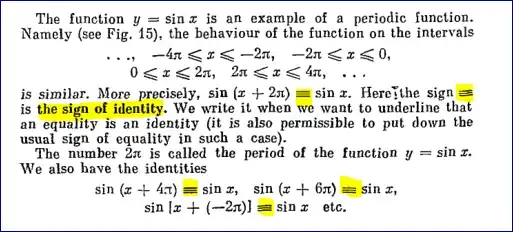Two polynomials are equal, if and only if they have the same coefficients and degrees for the corresponding terms (or they can be so arranged.)
A polynomial equation is when both sides of the equation is a polynomial expression.
These are two different mathematical statements, but strangely, I cannot think of a way to express these two statements with different notations so that the difference is clear.
When we write a polynomial equation, in which both sides of the equal sign is a polynomial expression, this represents an equation to be solved for the variable(s) in question, but does not mean the actual polynomial expressions are equal, the conditions for which I have given above.
If so, how do we express mathematically that two polynomials are equal and that we are not talking about an equation?

